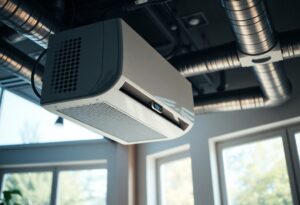Mold Treatment Essentials: How to Identify and Remove Mold Safely
Mold is a common problem in many homes, and it can have serious health implications if not addressed properly. Identifying and removing mold safely is essential to maintaining a clean and healthy living environment. In this article, we will discuss effective methods for mold treatment, how to prevent its recurrence, and tips for ensuring better indoor air quality, additionally, we will cover important considerations for homeowners regarding their HVAC systems after mold treatment.
How to Identify Mold in Your Home
Common Signs of Mold
- Musty Odor: A persistent musty smell is often a sign of mold, even if you can’t see it.
- Visible Growth: Mold can appear as black, green, white, or even orange spots on walls, ceilings, or floors.
- Water Damage: Areas with past or current water damage are prime locations for mold growth.
- Health Symptoms: Increased allergy or asthma symptoms, such as sneezing, coughing, or itchy eyes, can indicate mold presence.
Areas Prone to Mold
- Bathrooms: High humidity and moisture make bathrooms common places for mold growth.
- Kitchens: Leaky sinks or appliances can create mold-friendly environments.
- Basements: Often damp and poorly ventilated, basements are susceptible to mold.
- Attics: Roof leaks or poor ventilation can lead to mold in attics.
Effective Mold Removal Methods
DIY Mold Removal
For small mold infestations, you can use household products like:
- Vinegar: Spray undiluted vinegar on the mold and let it sit for an hour before scrubbing.
- Baking Soda: Mix baking soda with water to create a paste and scrub the affected area.
- Hydrogen Peroxide: Apply a 3% hydrogen peroxide solution to the mold and let it sit for 10 minutes before scrubbing.
Professional Mold Remediation
For extensive mold problems, it’s best to hire professionals who can:
- Conduct a Thorough Inspection: Identify the extent of mold infestation and its sources.
- Use Advanced Techniques: Utilize HEPA filters, negative air machines, and antimicrobial treatments.
- Ensure Safety: Engage professionals who have the necessary equipment and expertise to handle mold safely and prevent its spread.
Find and Post Jobs on the HVACJobsCenter
Preventing Mold Recurrence
Control Humidity Levels
- Use Dehumidifiers: Keep indoor humidity below 50% to discourage mold growth.
- Ventilation: Ensure proper ventilation in bathrooms, kitchens, and laundry areas.
- Air Conditioners: Regularly maintain and clean air conditioners to prevent moisture buildup.
Fix Water Issues
- Repair Leaks: Address leaks in roofs, walls, or plumbing promptly.
- Improve Drainage: Ensure proper drainage around your home to prevent water seepage.
Regular Cleaning
- Clean and Dry Wet Areas: Immediately dry any wet areas or spills.
- Use Mold-Resistant Products: Opt for mold-resistant paint, drywall, and insulation.
Mold Remediation Tips for Your HVAC System
After mold treatment, taking care of your HVAC system is crucial to prevent mold recurrence and ensure clean air.
Does the HVAC System Need to Be Replaced?
In most cases, the HVAC system does not need to be replaced. However, thorough cleaning and maintenance are essential:
- Professional Inspection: Have a professional inspect and clean the entire HVAC system, including ductwork, to ensure all mold spores are removed.
- Regular Maintenance: Schedule regular maintenance to keep the system clean and functioning efficiently.
Should the Homeowner Replace Their Air Filter After Mold Treatment?
Yes, it’s important to replace the air filter after mold treatment. A new filter will help:
- Trap Mold Spores: Prevent remaining spores from circulating through the air.
- Improve Air Quality: Ensure better indoor air quality by filtering out contaminants.
Tip of the Day
- Visual Inspection: Look for visible mold growth or discoloration inside the ductwork.
- Odor Check: Pay attention to any musty smells coming from the vents.
- Professional Testing: Hire professionals to conduct air quality tests and inspect the ductwork thoroughly.
- Moisture Control: Ensure there are no leaks or moisture issues in the ductwork that could promote mold growth.
Conclusion
Identifying and removing mold safely is essential for maintaining a healthy home environment. By understanding the signs of mold, using effective removal methods, and taking steps to prevent its recurrence, you can keep your home mold-free. Proper care of your HVAC system after mold treatment, including replacing air filters and checking ductwork, is crucial for ensuring clean indoor air. Mold Treatment! Follow these guidelines to improve your home’s comfort, health, and indoor air quality
Follow Us on Google Chrome
- To get started, switch to Google Chrome Browser
- Already on our site
- Top right, tap the 3 dots
- Bottom right, tap follow
- You are done.
Learn more and join our mailing list.
This post has been written by Team HVAC Talk Magazine. Stay informed and connected with the latest in HVAC—join us for expert advice, troubleshooting tips, and news updates. Don’t miss out, follow us now! #HVACExperts #HVACTips #StayInformed #HVACProTalk








